Heat maps are one of the most common types of mapping analysis used by organizations. Most people are familiar with Heat Maps (we all obsess about the weather heat maps). When analyzing complex data, heat maps are a go-to.
The goal is not the visualization; it is to understand data better and speed up decision-making.
Here are 5 common ways you unlock insight with heat maps. Firstly there are two common heat map types:
- Hot spot heat maps highlight clusters of your data in just a matter of clicks. A common example of a heat map would be a point density map. High densities of points are expressed by a darker shade, whereas low levels are expressed by lighter shades.
- Regional heat maps use graded differences in shading or color in order to indicate the total or average values or quantities in certain areas.
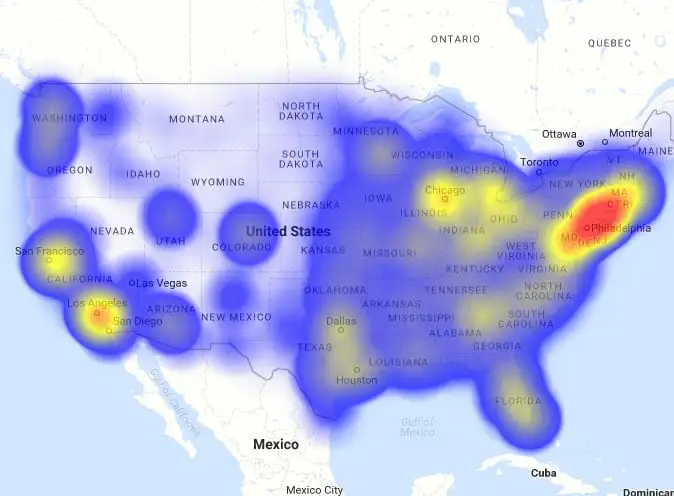
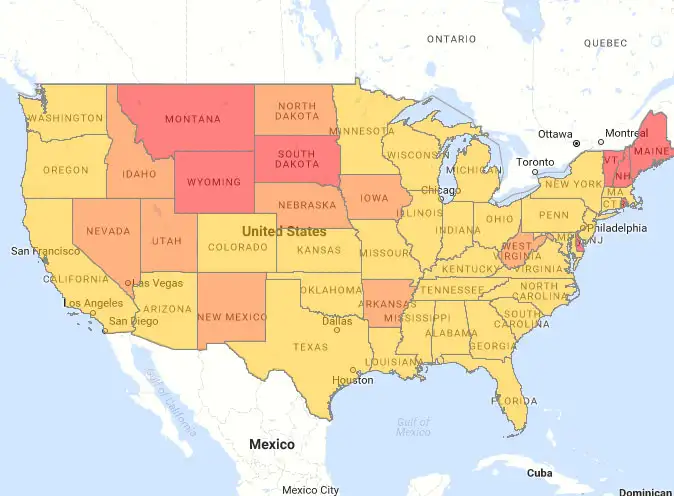
1. Identifying customer clusters and market analysis
An everyday heat map use case is to identify data clusters. It makes sense because they are great for speedy analysis. Use hot spot heat maps to identify clusters of customers, competitors, or store locations.
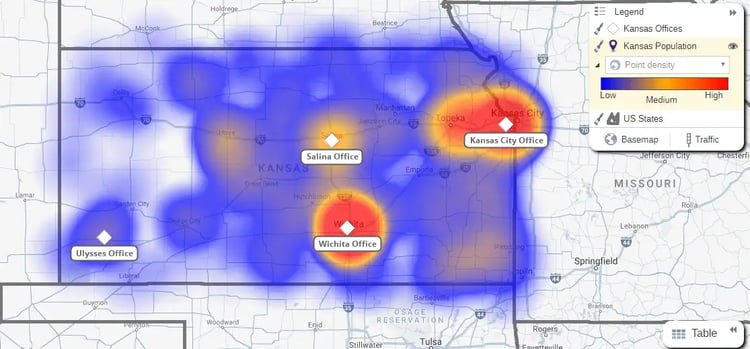
2. Refining distribution networks
One example of using heat maps to identify customer density is when analyzing your distribution or service network.
For instance, organizations use heat maps of their customer base to identify the best service or distribution center location.
When you can see customer locations in relation to your distribution centers, you can make informed decisions on the optimal sites that provide maximum customer service levels with minimum cost.
You can optimize the volume of customers in a region and balance the workload for your service technician teams using heat maps. It also helps with hiring decisions.
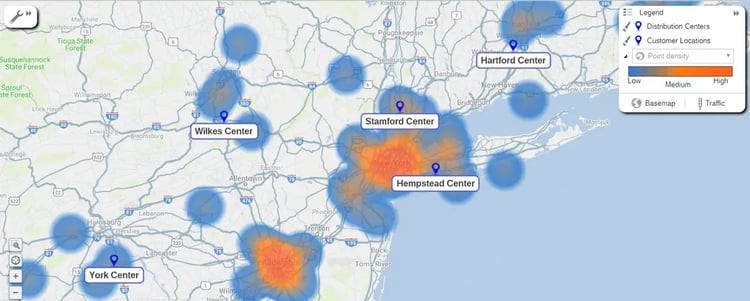
3. Identify new areas for marketing campaigns
Using third-party, proprietary, or demographic data, you can run effective marketing and sales campaigns.
For example, a fashion retail store in Texas is planning to run a billboard campaign. Using a regional heat map of demographic data, they see the optimal locations for billboards based on the population densities of their target audience (females aged 22 to 29). Armed with intelligent maps, they quickly select the best spots to maximize campaign impact.

4. Identify areas for expansion
Heat maps are the perfect tool to identify new areas to expand and grow sales. Many organizations realign and optimize sales territories quarterly but at least annually. Heat maps are an integral part of their decision-making process.
You can identify gaps in coverage by overlaying customer sales, product sales, or other data with customer or competitor data. You can uncover whitespaces for growth. And analyze hotspots for future growth.
For example, you have multiple product lines and use heat maps to identify "micro hotspots" for products. You can uncover growing products in specific regions that may signal a trend to exploit nationally.
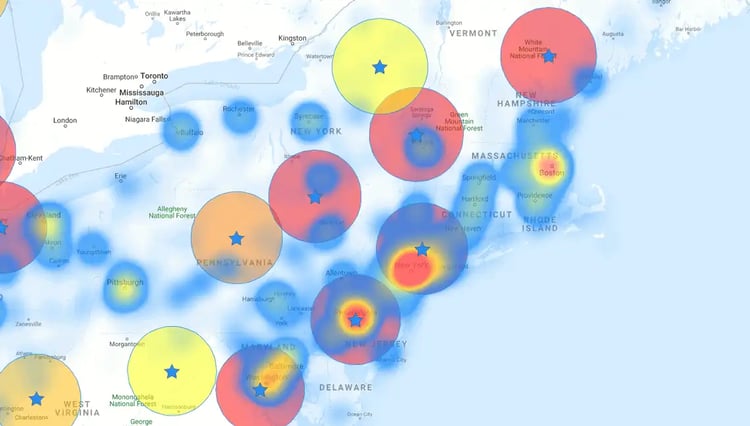
5. Analyze regional trends
In the example above, we showed how organizations use hot spot heat maps to plan for expansion. Some organizations use regional heat maps to visualize regional performance on customer satisfaction ratings.
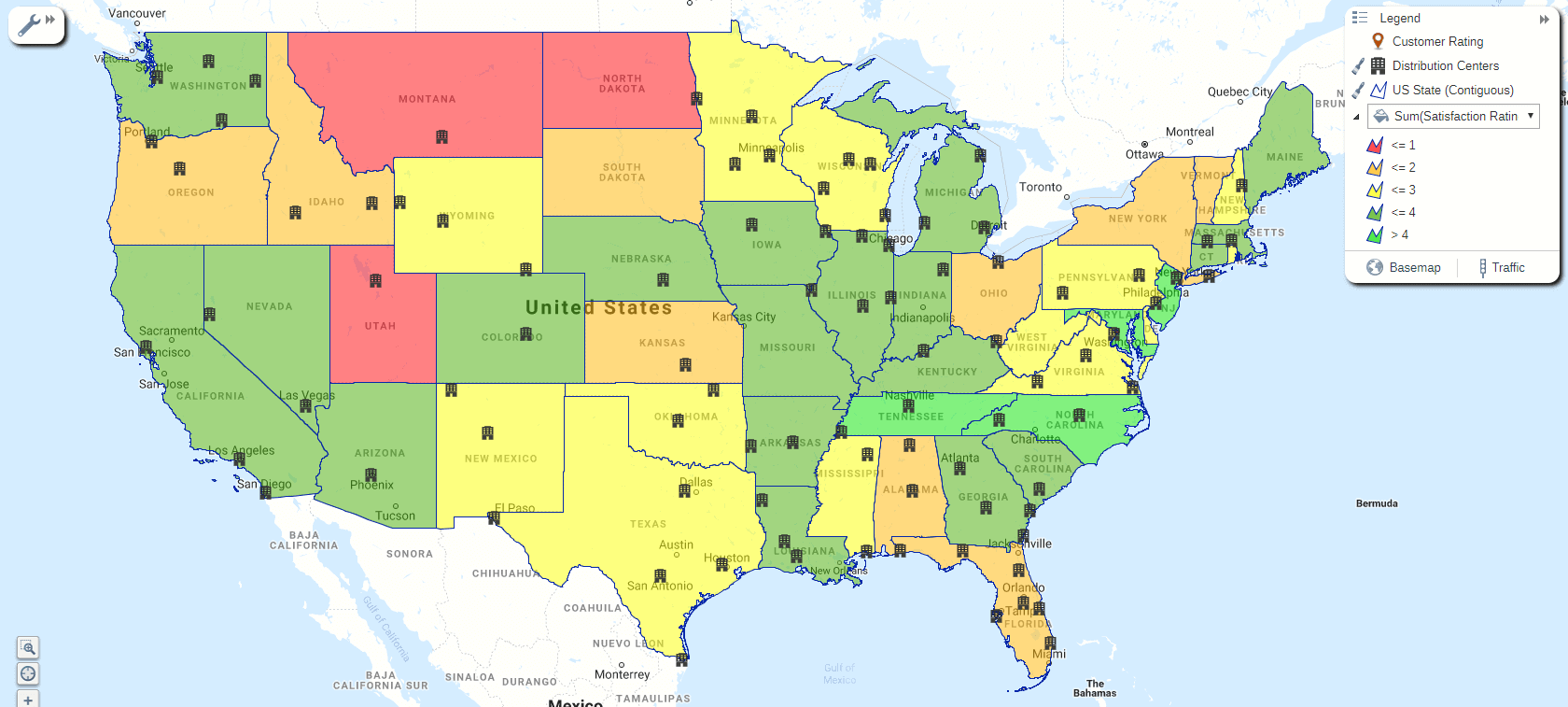
So there you have it, 5 ways organizations use heat maps that you might not have thought of. It goes to show there is a lot more to heat maps than first thought and that every part of your organization can benefit from them, from sales, operations, marketing, to after-sales services.
 by
by 